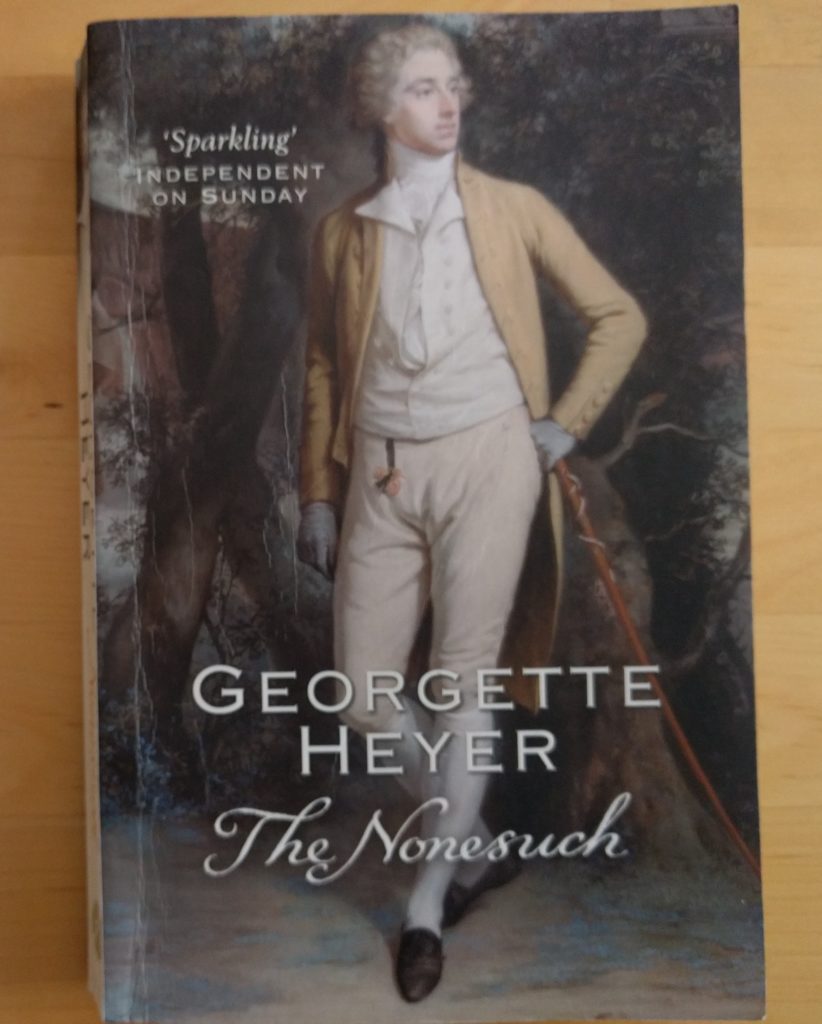Well, this is the second of my blogs about my comfort reading during Lockdown, and I’ve stayed with one of my favourite authors, Georgette Heyer.

I decided that I could do no better than re-read some of her Regency historicals to discover if my opinion of her writing had changed in the intervening years.
Yesterday I finished The Nonesuch, first published in 1962. This is quite a different tale to Arabella (reviewed here), which tells the story of Sir Waldo Hawkridge — the Nonesuch of the title. This high-born gentleman, famous in society for his sporting prowess, perfect address, and fashion icon for those who disdain the cult of Dandyism, inherits a rundown estate in Yorkshire. He travels there to inspect his inheritance with a view to turning it into another of his orphanages — I forgot to mention that Sir Waldo is also a philanthropist. What more could you desire in a hero? Oh yes, he’s goodlooking too.
He travels to his new estate with his young cousin, Julian, Lord Lindeth, in tow, and there they make the acquaintance of… Miss Ancilla Trent our heroine. A gently-born lady of twenty-six years, Ancilla is employed as governess and companion to the beautiful, but very spoiled heiress, Miss Tiffany Wield.
Of course, Ancilla is the perfect Regency heroine, not beautiful, but attractive – not quite on the shelf, but resigned to a life of earning her own living, because she does not want to be a drain on her impoverished family’s resources. It goes without saying that she is accomplished, calm in a crisis, intelligent, and knows how to handle her headstrong and selfish charge Tiffany. It’s no wonder that Sir Waldo, heretofore uninterested in marriage, finds her beguiling.
So there we have it, our four main characters, and the dance begins…
Heyer weaves a gentle plot, with Julian initially falling for Tiffany’s stunning good looks, and blinded to her faults. It is up to Sir Waldo to gently open his young cousin’s eyes to her unsuitability as a match, and who better to assist him but the delightfully sensible and charming Miss Trent?
With lots of clever dialogue, engaging secondary characters, and the creation of the most awfully comic character of the abominable Tiffany, Heyer’s story made me laugh out loud. The romance element is subtle, but it develops organically, and we never doubt for a moment that there will be happy endings all round.
It goes without saying that interspersed in the story are all the historic details that make the setting so believable. So if you enjoy Regency stories with humour and romance, put this one on your list.

